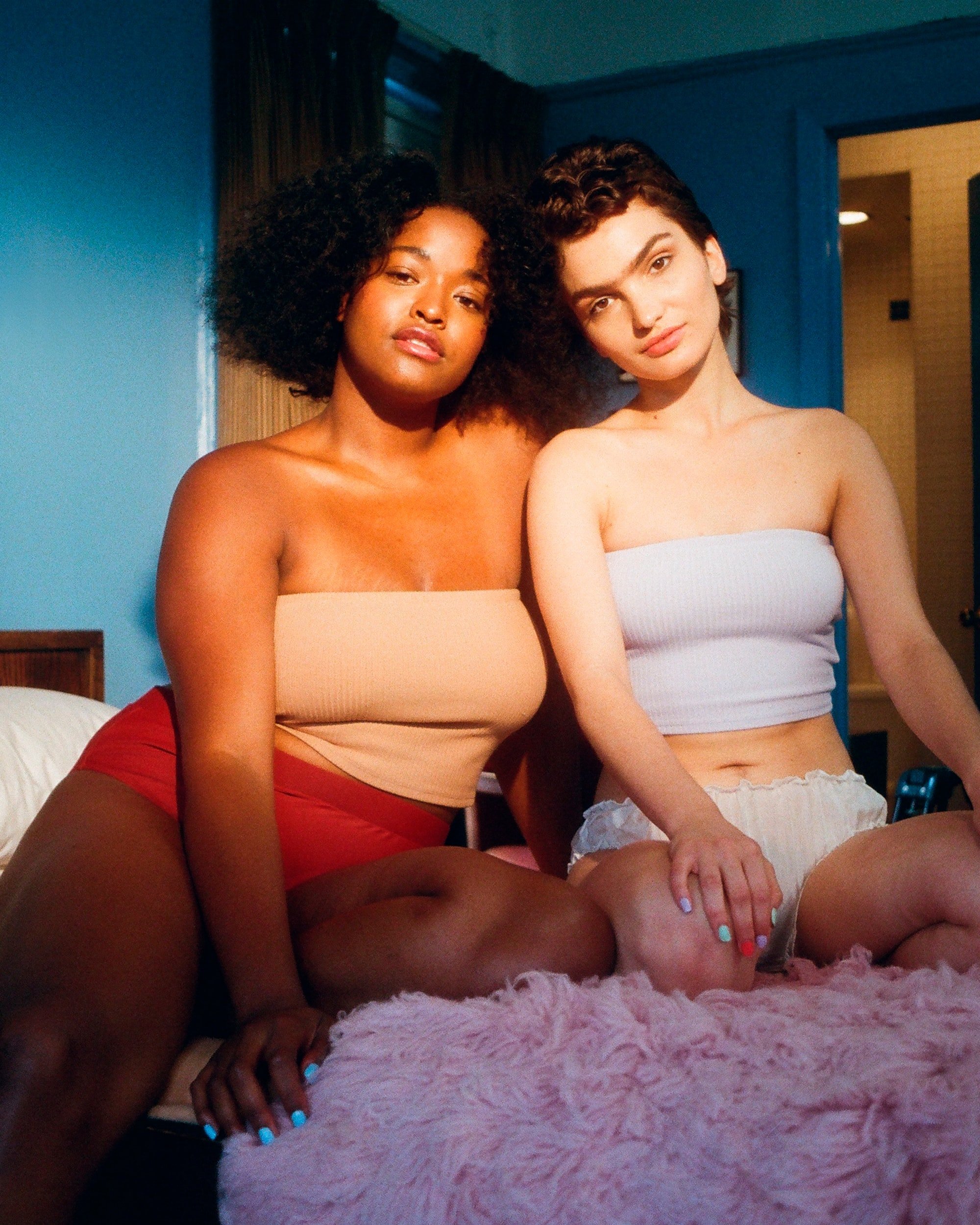By Miranda Park (she/her)
Body neutrality has been dubbed by some as the “new body positivity”, yet it has emerged from the immense shadow of its predecessor to create an entirely different movement. But, while body neutrality has gained significant traction in recent years, many (including, up until recently, yours truly) are still unfamiliar with the term and why it might be a far more inclusive and liberating alternative to body positivity.
So why should there be an alternative, when body positivity seems to be championing all the right things?
While body positivity began as a movement that encouraged people to take pride in their bodies and subvert unattainable, Eurocentric beauty standards, many have argued that it has now morphed into a culture that perpetuates those very same ideals. Those who helped to galvanise the body positivity movement (namely, POC, fat, trans, queer and disabled people) have by and large been pushed back into the margins to make room for a new face of the movement; thin, white, able-bodied and conventionally beautiful women, who preach the gospel of body positivity as they post photo after photo of workout selfies and bikini shots. It seems incongruous to take the advice of a woman who tells her followers to embrace their curves, their cellulite, their stretch marks and all their other lumps and bumps, when she seemingly has none.
It’s no wonder then, that many people have found it increasingly difficult to relate to the message this movement now promotes, and even picture what it would look like sans straight-sized influencers and a million different products to consume, wear and lather yourself in (because let’s not forget how much the beauty industry has capitalised on body positivity).
We might also consider how the media has co-opted body positivity to polarise the way we (and by we, I largely refer to women) view ourselves. Whether it’s constantly critiquing or celebrating women’s bodies (sometimes even both at the same time), there seems to be no break from the intense scrutiny of a media culture that would have us either wallow in our own self-loathing or be incessantly joyous about our appearance. With no middle ground, there is no space between these two extremes to simply be at peace with the way our bodies look and function.
Here is where body neutrality steps in. Body neutrality has emerged from this seeming void between self-criticism and self-love to offer another alternative – acceptance of our bodies as they are.
The term itself first started appearing on the internet around 2015, after many began to pinpoint the lack of intersectionality inherent in the way body positivity was evolving. However, body neutrality has been a long time in the making. It follows on from decades of activism that has challenged institutionalised fatphobia and “celebrate[d] plus-sized bodies”, all of which traces back to the radical fat-acceptance movement that began in the 1960s. The foundations of body neutrality were also set primarily by plus-sized WOC such as Gabi Gregg, who sought to reclaim the word “fat” and reignite discussions about anti-diet and photoshop culture, weight bias and body inclusivity on social media.
When I was trying to gain a better understanding of what body neutrality aims to do, I found these infographics by Anuschka Rees, author of the book Beyond Beautiful, incredibly helpful in breaking down the concept:
According to Rees, body neutrality is centred on the idea that our self-worth and happiness are not contingent on our body image, rather, our body image is just one facet of our identity, which we can remain neutral about. In short, it is about being less body-centric and more holistic. Rees also stresses that body neutrality doesn’t seek to shame or devalue those who do express love for their bodies and feel confident in the way they look; it just seeks to remind us that we have many other qualities which make us who we are. Lauren Sharkey also explains the concept well when she writes:
Essentially, [body neutrality] aims to encourage you to accept the body you are in and focus on its achievements, rather than its appearance. For example, think about how powerful your arms and legs are, rather than their size. Most importantly, the movement doesn’t want you to berate yourself on the days where you don’t feel like loving any part of yourself.
This last sentence is one I really resonate with, because as much as body positivity is about self-love, it paradoxically comes with its fair share of frustration and guilt when you “fail” to stay in a perpetually positive mindset. It’s such a freeing prospect to think of all the time and energy we might conserve by learning to respect our body, but not be consumed by the relentless pressure to love every inch of it, every single day.
Something I also find quite nuanced about body neutrality, is that while it encourages us to “focus on our [body’s] achievements” and function over its appearance, it is also inclusive of people with disabilities. Body neutrality creates a space and discourse for those who may feel “frustrated with the demand to love their bodies when they feel betrayed by them”. As Rebekah Taussig writes in an article for The Guardian, “being neutral could feel like a relief” for those who cannot identify with the able-bodied privilege that body positivity has come to foreground.
So now that we’ve unpacked the concept of body neutrality, how do we go about practicing it in our everyday lives?
There are many was that we can incorporate body-neutral practices in our daily routines, but instead of me rambling on, I’ll leave you with these fantastic infographics featured on the hugely popular body inclusivity Instagram account @i_weigh (founded by actor Jameela Jamil):
-
use more neutral terms to talk about food
notice how social media content affects you and tailor your feed to avoid harmful content
-
Chose foods based on how you feel (and personalised professional medical advice) rather than focused on manipulating weight
-
Chose physical activity that you enjoy, that improves your mental well-being
To find out more about body neutrality, check out these articles:
Dionne, Evette 2017, “The Fragility of Body Positivity: How a Radical Movement Lost Its Way”, Bitch Media.
https://www.bitchmedia.org/article/fragility-body-positivity
Kessel, Anna 2018, “The rise of the body neutrality movement: ‘If you’re fat, you don’t have to hate yourself’”, The Guardian. https://www.theguardian.com/lifeandstyle/2018/jul/23/the-rise-of-the-body-neutrality-movement-if-youre-fat-you-dont-have-to-hate-yourself
Meltzer, Marisa 2017 “Forget Body Positivity: How About Body Neutrality”, The Cut. https://www.thecut.com/2017/03/forget-body-positivity-how-about-body-neutrality.html
Noor, Poppy 2019, “What is body neutrality, the new trend loved by beautiful celebs?”, The Guardian. https://www.theguardian.com/fashion/2019/oct/31/body-neutrality-taylor-swift-jameela-jamil-latest-trend
Sharkey, Lauren 2019, “Body Neutrality Acknowledges The Struggles of Self-Love & TBH, It’s Liberating AF”, Bustle. https://www.bustle.com/p/what-is-body-neutrality-the-growing-movement-teaches-that-you-dont-have-to-love-your-body-all-of-the-time-16439881
Weingus, Leigh 2018, “Body Neutrality is a Body Image Movement That Doesn’t Focus on Your Appearance”, HuffPost. https://www.huffpost.com/entry/what-is-body-neutrality_n_5b61d8f9e4b0de86f49d31b4?guccounter=1&guce_referrer=aHR0cHM6Ly93d3cuZ29vZ2xlLmNvbS8&guce_referrer_sig=AQAAAEXc3XRDoCnJYpEX-WUQZQV8Vh1nVQs4QGO2AxbHvylRLhvcLyVmMB2S5wifqpQ4aXYzOF_7Tvq_hCzfHlCB6ahNZXS3zH1NhlBEs_xnzP85gOtmv_2iN3EoEbkFuwEV0l62wq94G7HktDWkjfYz78KUzVFfXxr3gpx1SJBEO2Zd
Your Fat Friend 2020, “Having a Better Body Image Won’t End Body-Based Oppression: What body neutrality does–and doesn’t – accomplish”, Self. https://www.self.com/story/body-neutrality
People and pages to follow:

